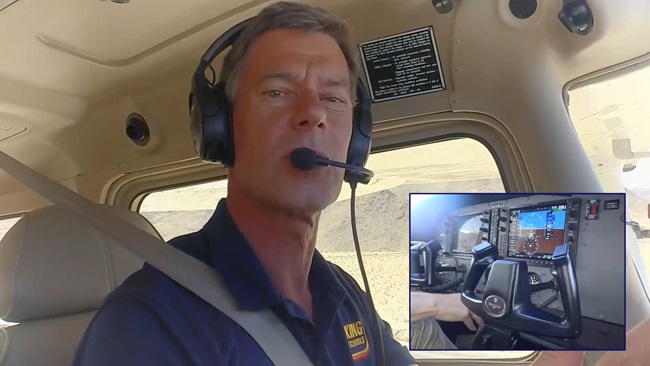The FAA will begin the first of 98 safety outreach programs during Sun ’n Fun at the end of March, a “safety stand-down” for all of general aviation that is initially targeted at homebuilt and Experimental category aircraft because that seems to FAA officials to be the “low-hanging fruit” for their efforts, the easiest place to make the greatest gains.
FAA Administrator Randy Babbitt said at a press conference March 21 that he is partnering with AOPA, the Experimental Aircraft Association, and other organizations in the effort. The first safety meeting is April 2 in Lakeland, Fla., at Sun ’n Fun.
The goal of the stand-down is to reduce the general aviation fatal accident rate by 10 percent.
“Our system is safe,” Babbitt said. “The fatal accident [number] has decreased. So have number of hours flown due to the recession and fuel prices. We need to refocus our efforts. A special area of concern is amateur built and other Experimental aircraft. Five percent of all of general aviation hours are flown by amateur built and Experimental aircraft, yet they have 22 percent of all fatal accidents. That is a five-to-one ratio. This is something we really have to work on,” he added. The effort also will focus on agricultural operations.
EAA reacted to Babbitt’s remarks regarding homebuilt and Experimental aircraft: “As the number of amateur-built aircraft registered and hours flown continue their growth, EAA continues to work at continuing the decline in the overall accident rate for these aircraft,” said Sean Elliott, EAA vice president of industry and regulatory affairs. “EAA’s safety programs such as Technical Counselor and Flight Advisor have proven their value in reducing the accident rate when they are used, and offer a valuable resource for builders and pilots who enjoy the freedom available through this segment of aviation.”
The Air Safety Institute conducts 200 safety meetings a year, and pilots take 30,000 of the institute’s online safety courses every month, said AOPA Foundation President Bruce Landsberg, who also heads the Air Safety Institute.
“We are happy to work with the FAA in a variety of areas, and you’ll see us do more of that,” Landsberg said.
“EAA’s focus is working within the industry/government collaboration that is developing through FAA’s GA Joint Steering Committee,” said Elliott. “That group offers wide background and expertise to analyze data and provide recommendations to the agency that achieve future safety goals.”
Babbitt said he hopes his FAA program will transform the general aviation safety culture during the next five years. The program uses techniques taken from airline safety programs. The stand-down is not regulatory in nature, but rather, informational, an FAA official said.
The program will focus on remedial training to change pilot behavior, as opposed to fines and suspension of pilot certificates. The intent is to determine if pilot schools and instructors are teaching or overlooking techniques that lead to accidents, and to correct the training, thus affecting a larger group. There is also an effort to reach the pilot who does not attend events such as safety meetings. One way to do that, an FAA official said, is electronically.
Babbitt also expressed concern about warbird flying, although he specifically mentioned that he approves of flights to demonstrate the aviation heritage to the public. “But to put passengers aboard and subject them to safety régimes, that does concern us,” Babbitt said.



